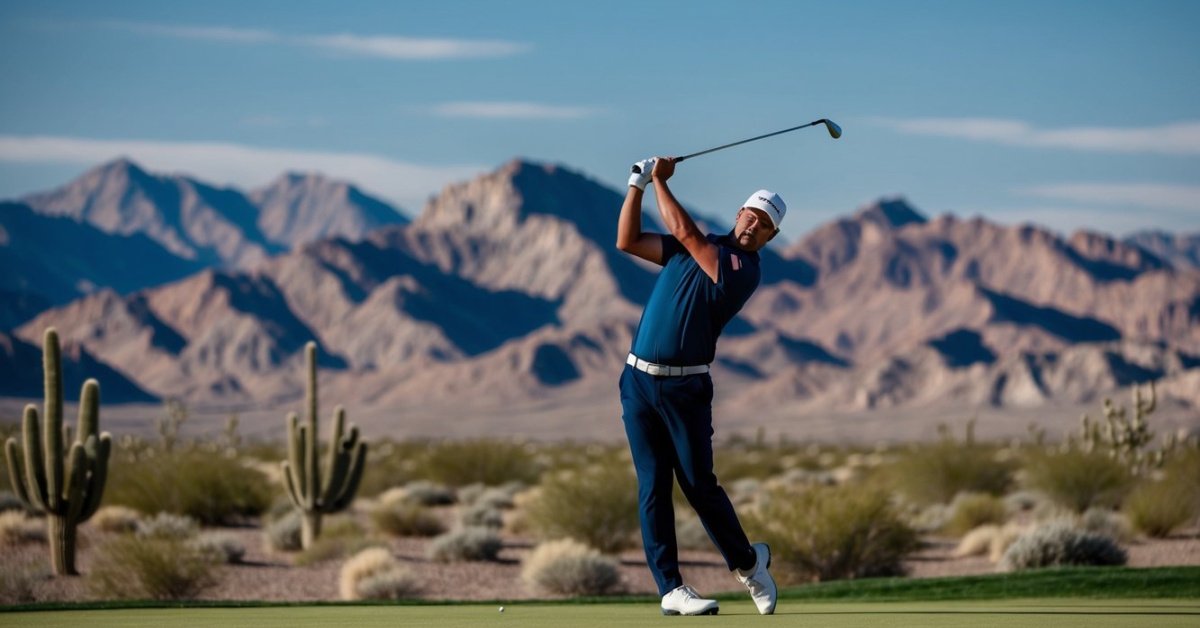Golf isn’t just a game; it’s a passion that doesn’t fade with age. As a senior golfer, you know the right equipment can make all the difference. You might be wondering, what golf ball is best for your game now?

Choosing the right golf ball is crucial for maximizing distance and control, especially when your swing speed isn’t what it used to be. We’ll dive into the best golf balls that cater to your needs as a senior player, helping you enjoy the game you love with every swing.
Factors to Consider for Senior Golfers
When you’re on the quest to find the perfect golf ball as a senior golfer, there are several aspects you should weigh in on. Your days of high swing speeds might not be as frequent, but with the right golf ball, your game can still be top-notch. Here’s what you’ll want to consider to keep your drives long and your approach shots precise.
Compression Matters
The compression of a golf ball can have a massive impact on your play. Lower compression balls are generally better suited for golfers who have a slower swing speed, which is often the case as you climb the age ladder.
- Soft, low compression balls can increase the distance
- Decreased firmness leads to less vibration on impact
- They can help maintain a soft feel that is easier on your joints
A ball with the right compression for your swing can aid in achieving maximum efficiency.
Core and Dimple Design
The core of the golf ball is the engine that drives performance. Selecting a ball with a core designed for senior players can often result in improved distance. The dimple pattern also influences the ball’s trajectory and stability in the wind. You’ll want a ball that offers:
- Consistent flight path
- Stability through various weather conditions
Cover Construction
The cover of the golf ball determines the control and feel around the greens. Urethane covers typically offer more spin and better feel which is crucial for your short game. On the other hand, Surlyn covers are more durable and provide less spin, which might suit a golfer looking for straighter shots.
Color and Visibility
Ask yourself if you’d like a standard white golf ball or one that stands out, colors such as yellow or orange can aid visibility:
- High-contrast colors are easier to spot in the air and on the grass
- Enhanced visibility helps keep track of the ball during flight and find it once landed
Price Considerations
Finally, consider the cost. High-performance golf balls can dent your wallet, so it’s worth finding a ball that offers a balance between cost and the features that benefit your game the most. Sometimes mid-priced models strike the perfect compromise without sacrificing too much on quality. Keep in mind that pricier models often offer technological advancements that could prove beneficial for your individual needs.
Best Golf Balls for Maximum Distance
« What Golf Ball for High Swing Speed? Unlock Optimal Performance with Top Picks
Are Top Golf Balls Bad for Your Clubs? Protect Your Gear with These Tips »
When it comes to gaining those extra yards off the tee, selecting the right golf ball is paramount. Low-compression golf balls are often recommended for seniors because they require less force to compress and thus create more distance when struck with a slower swing speed. While it’s important to assess your own skills and preferences, there are certain balls that consistently rank high for delivering maximum distance.
Titleist Pro V1 and Pro V1x have long been the gold standard for many golfers, including seniors. The balls offer a nice balance between long distance, consistent flight, and short-game control. The Pro V1x in particular boasts a firmer feel and higher flight compared to the Pro V1, which might be something your game benefits from.
If you’re on a hunt for that little bit of extra distance, consider Bridgestone’s e6 Soft. It’s a ball that’s specifically designed to reduce spin, which can often translate into additional roll upon landing. This can particularly be a game-changer for those with slower swing speeds.
Furthermore, the Callaway Supersoft has become enormously popular among senior golfers. Its ultra-low compression allows for reduced drag and increased lift, which helps maintain velocity and achieve greater distance. Plus, the array of color options enhances visibility in the air and on the course.
- Titleist Pro V1
- Titleist Pro V1x
- Bridgestone e6 Soft
- Callaway Supersoft
Remember, it’s not just about the name printed on the ball. Look for a urethane cover which typically accompanies premium balls like the Pro V1 and Pro V1x. Urethane covers offer a better grip on the clubface for more spin control on approaches, without sacrificing the distance benefits.
| Golf Ball | Core | Cover | Dimple Design | Swing Speed Suitability |
|---|---|---|---|---|
| Titleist Pro V1 | Soft | Urethane | 352 tetrahedral | Moderate to Fast |
| Pro V1x | Soft | Urethane | 328 tetrahedral | Fast |
| Bridgestone e6 Soft | Low Compression | Surlyn | Delta dimple | Slow to Moderate |
| Callaway Sup |
Golf Balls that Provide Control and Spin
When it’s time to master the short game, you’ll want golf balls that offer superior control and spin. It’s not just about getting to the green; it’s about staying there and placing the ball exactly where you want it.
Urethane-covered balls tend to be the go-to for enhancing spin, especially around the greens. Unlike the surlyn-covered counterparts, urethane allows your grooves to grip the ball, creating that backspin necessary for drop-and-stop shots. As a savvy senior player, you can’t overlook the importance of a ball that provides that extra bit of control when you’re aiming for the pin.
Here are some noteworthy balls that excel in the realm of spin and control:
- Titleist AVX: Designed for golfers who prioritize a softer feel, the AVX might be your secret weapon. Its high flex casing layer adds to the spin factor, while helping you maintain a soft touch.
- Srixon Z-Star: With its Spin Skin technology, this ball increases friction on approach shots, so you can expect more greenside control.
- TaylorMade TP5x: The five-layer construction of the TP5x works wonders if you’re looking for both distance and spin. Despite its firmer feel, its control around the green is commendable.
What might surprise you is that achieving high spin doesn’t necessarily mean sacrificing distance. The Callaway Chrome Soft ball is a prime example. Its Graphene-infused Dual SoftFast Core aids long-distance shots on full swings, yet still allows for pinpoint precision when chipping or putting.
When practicing, pay close attention to how each ball reacts on approach shots and around the green. It’s the surefire way to understand which ball matches your swing style and prowess. Opt for a ball with a cover that grips the clubface at impact, is resilient, and most importantly suits your game.
Remember, there’s a difference between a ball that stops dead and one that offers the controllable spin that will leave you with a tap-in for birdie. The key is to find a balance that suits your style of play, without compromising on your ability to execute those crucial shots that shave strokes off your score.
Soft Golf Balls for Gentle Impact on Joints
As you progress in golf, it’s not just about control and distance. It’s also about how the game impacts your body, particularly your joints. Golf balls with a soft feel can significantly reduce the stress on your hands and elbows during a swing. If you’re a senior golfer, this could mean more comfort during and after your rounds, as well as fewer aches and pains overall.
Playing with a softer golf ball, you’ll notice a gentler feel at impact. This doesn’t only serve as a relief for your joints but can also improve your feel for the game. The softness of a ball is typically determined by its core and the materials used in its cover. Balls like the Titleist Pro V1 and Callaway Supersoft have been designed with these factors in mind, to ensure that you’re not sacrificing on green-side control or distance off the tee while still keeping that soft impact.
What’s more, softer golf balls can often help with your short game precision. With a lower compression, you’ll find they compress more on impact for that extra bit of control and feedback on your short irons and putts. While these balls might not travel as far as the harder ones, they could help you improve your scoring through better short game execution.
Here’s a quick comparison of popular soft golf balls:
| Golf Ball Model | Compression | Cover Material |
|---|---|---|
| Titleist Pro V1 | Low | Urethane |
| Callaway Supersoft | Ultra-Low | Ionomer |
| Wilson Staff Duo Soft+ | Very Low | Ionomer |
Choosing the right soft golf ball involves trial and error. Take note of how each option feels during your practice rounds. It’s essential to focus on your swing sensation and the sound at impact—all clues to finding the ball that will keep your game sharp and your joints thankful. Remember, the best ball for you is the one that feels great to play with, helps you maintain control and keeps you playing longer with less fatigue. Choose wisely, and enjoy the game with every shot you take.
Exciting Features of Modern Golf Balls
As a senior golfer and savvy player, you’ve witnessed the evolution of golf equipment firsthand. But it’s the advancements in golf ball technology that have been quietly revolutionizing the way you play. Modern golf balls are engineering marvels, and they cater to the nuances of a senior golfer’s game in ways that simply weren’t possible a decade ago.
First off, let’s talk about the Gradational Compression Core found in some of the latest models. This feature allows for a lower compression, meaning the ball can be squashed more easily upon impact. What does this mean for you? More distance off the tee, regardless of swing speed. When your swing isn’t what it used to be, this tech can keep you in the game with the young guns.
Then there’s the Spin Control. New multilayer designs enable a delicate balance of high spin around the greens and low spin off the driver. With this kind of ball, your approach shots will stick to the greens like Velcro, and your drives won’t veer off wildly, reducing the chances of those frustrating hooks or slices.
A key feature to pay attention to is the Urethane Cover. Though durable, these covers are softer than ever, offering that soft feel you love without sacrificing performance. Plus, they interact with the clubface for just the right amount of grip and spin. This means more control on every shot, whether you’re hitting a high, soft flop shot or a bump-and-run.
Lastly, while technology like 322 Dimple Patterns may sound like jargon, it plays a big role in ball flight. These patterns are optimized to reduce drag and enhance lift, helping your ball fly higher and stay airborne longer. The result? You’ll find your shots consistently reaching their intended target, not falling short because of a loss in altitude.
With so many options available, your perfect golf ball is out there, waiting to lower your scores and boost your enjoyment on the course. Remember to focus on how the ball reacts to your individual swing and how it performs in the conditions you typically play in.
Conclusion
Frequently Asked Questions
What factors should senior golfers consider when choosing a golf ball?
Senior golfers should consider control, spin, and the impact on their joints when choosing a golf ball. It’s important to select a ball that offers comfort and reduces stress on the body, particularly on the hands and elbows.
Why are soft golf balls recommended for senior golfers?
Soft golf balls are recommended because they can help to reduce stress on a golfer’s joints, and provide more comfort during and after the round, which is particularly beneficial for seniors with sensitivity in their hands and elbows.
What advanced features do modern golf balls have for senior players?
Modern golf balls have features like Gradational Compression Core, Spin Control, Urethane Cover, and 322 Dimple Patterns. These advancements cater to a senior golfer’s game by offering increased distance, improved control, and better ball flight.
How should a senior golfer choose the perfect golf ball?
Senior golfers should choose a golf ball based on its reaction to their individual swing and how it performs in typical play conditions. Testing different golf balls and paying attention to their own comfort and playability are key steps in finding the perfect match.










